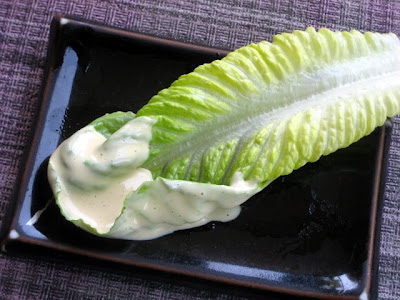
Last week in class I played a game of Nutrition Jeopardy and won an apple for correctly answering the question, “What is a serving size of fruit?” My answer was “One apple.” **
The real answer is more complicated since not all fruits come conveniently packaged as a single serving. Even apples vary widely in size – when I worked as a cashier at Whole Foods a few summers ago, I sold a woman an apple that weighed a half-pound (and cost an arm and a leg because it was a local, organic Honeycrisp).
According to MyPyramid.gov, a serving of fruit could be anything from a whole piece of fruit (one apple), to a wedge of melon, to 3/4 cup of fruit juice. I have so many problems with this system!!! I’ve already pointed out the wide variations in size for whole fruits like apples. And just what is meant by a “wedge” of melon? It could be anything from a sliver to a quarter melon. And are they referring to 100% fruit juice, or juice sweetened with high fructose corn syrup?
Anyway, I’m digressing here from my original subject of apples, so I’ll write about serving size in another blog post.
Back to my apple prize… I noticed this morning that it had a little rotten spot on its otherwise rosy shoulder. I’d better do something with that today, I thought. I also had half of a Gala apple in the fridge that needed to get eaten. I’d been thinking about making homemade applesauce from a recipe in Feeding the Whole Family by Cynthia Lair, so I pulled out the cookbook and checked my pantry for the other ingredients.

I had no cinnamon sticks, but ground cinnamon would do, and I would use pear cider instead of the apple juice/cider called for in the recipe. Lastly, I wanted to try making the applesauce without added sugar, so I replaced the sugar with 1/2 cup of golden raisins (thinking that golden raisins would not color the applesauce).
If I’d read the recipe more carefully, I would have seen that Cynthia intended the sugar as a optional ingredient to be used only if the apples weren’t sweet enough. I should have started with a smaller amount of raisins. The final product was definitely too sweet but otherwise intensely apple-y and just tart enough to make me smile. In the recipe posted here, I reduced the raisins to 1/3 cup, but you could opt out on the raisins altogether or go with even less (or none).
One last note: After the 15-minute simmer time, I continued to simmer the mixture uncovered for an additional 10 minutes and ended up with something more the consistency of apple butter, which was delicious on my morning toast! For a juicier applesauce consistency, definitely stick with the recipe.
No Added Sugar Homemade Applesauce
 Preparation time: 30 minutes
Preparation time: 30 minutesMakes about 2 cups
2 cups sliced apples
1/3 cup pear cider (can use apple juice or cider)
1/4 teaspoon cinnamon
Pinch of salt
1/3 cup golden raisins
Put all ingredients into a medium pot. Bring to a boil, reduce heat, and simmer, covered, until fruit is tender and the liquid has reduced by at least one half, about 15 minutes.
Allow mixture to cool slightly, then puree in a blender or mash with a potato masher, depending on the consistency you want. Serve and enjoy!
** This was a project some classmates had put together as an educational tool, and is neither a reflection of the level of education I'm receiving nor of the extent of my nutrition knowledge as I near my graduation!












